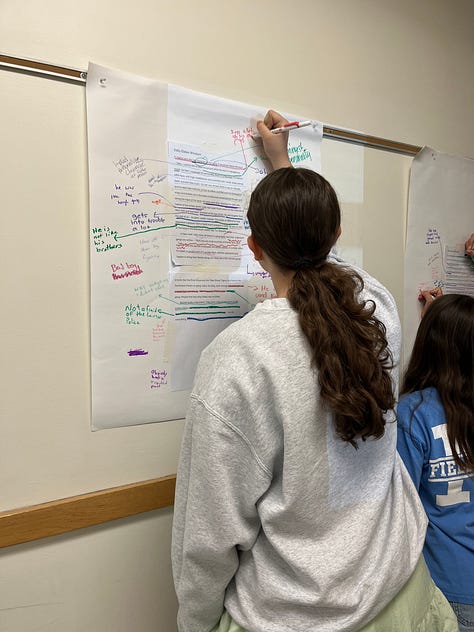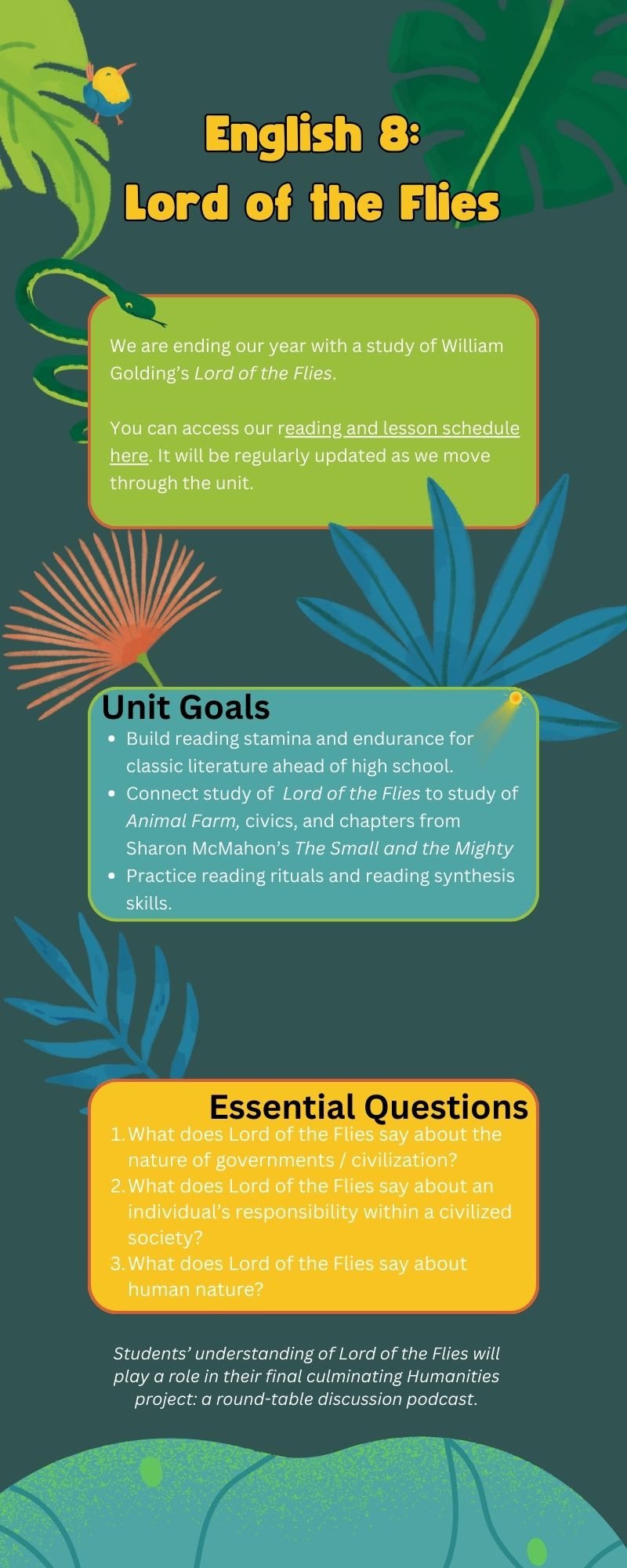Friends, this is the last week I will be sharing all of my posts with everyone for free. Beginning next week, we are back to paid content for May. And next week I’ll be launching our Summer of Planning plans — all free PD for all Moving Writers Community members all summer!
We hope you’ll want to join us by becoming a paid member for $5/month or $50/year!
Someday I will learn my lesson and plan a writing unit for one prep while I plan a reading unit for the other. Every year, I make this vow. Every year, I fail.
And so here we are, both preps in a reading unit — The Outsiders in 7th and Lord of the Flies in 8th. Some thoughts of note:
You’ll notice my students are still doing independent reading every day (first 10 minutes of class) while they also read a whole-class novel. I manage this two ways: first — I make class time for both. (We give our time to what we value. If it’s valuable, we need to make time for it during class.)
Second — I reduce the amount of independent reading I expect from each student. Typically, I require two hours of independent reading per 7-day class rotation. I give students about half of this during class time, and the other half is the only “homework” I assign. However, during a whole-class novel study, I stop requiring the out-of-class portion. (Here’s the crazy thing that happened this week when I checked in on their independent reading: they are reading MORE than they were before! Why?! How?!)
I’ve found a pretty nice flow you might want to steal. I assign reading in little chunks. On the day the reading is due, students write a reading response (a la Marilyn Pryle). They then have a discussion based on their annotations and reading responses — that way, everyone comes into the conversation with at least one fully formed thought to share. Then, on the other days, I teach a reading strategy and give them reading and annotating time.
Periodically, I am ending class (usually the days they have the bigger chunk of reading time) with an exit ticket that asks for students metacognition about how and why they are reading the way that they are. I’ll share it with you below. It’s providing me with interesting insight, but also building students’ flexibility and awareness of different reading modes.
What We Did
What It Looked Like














I obviously already knew this, but you are an INCREDIBLE teacher. All of this is so brilliant!
I also really appreciate how you shared about reading independent books while reading classroom selections. This is really helpful. Thank you!